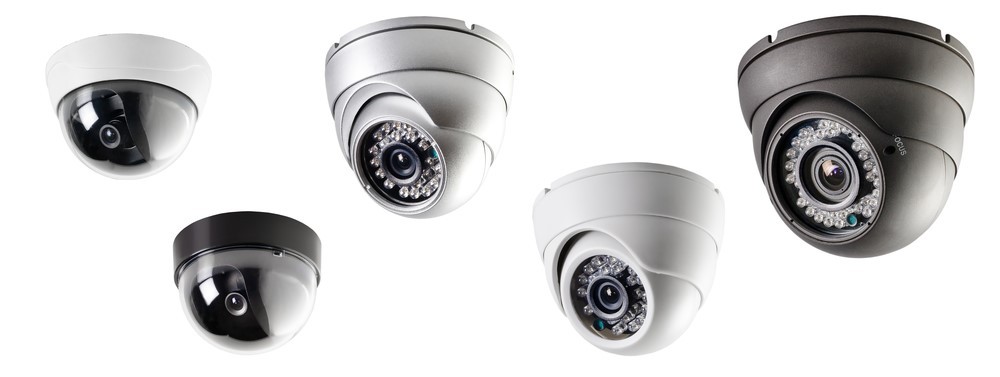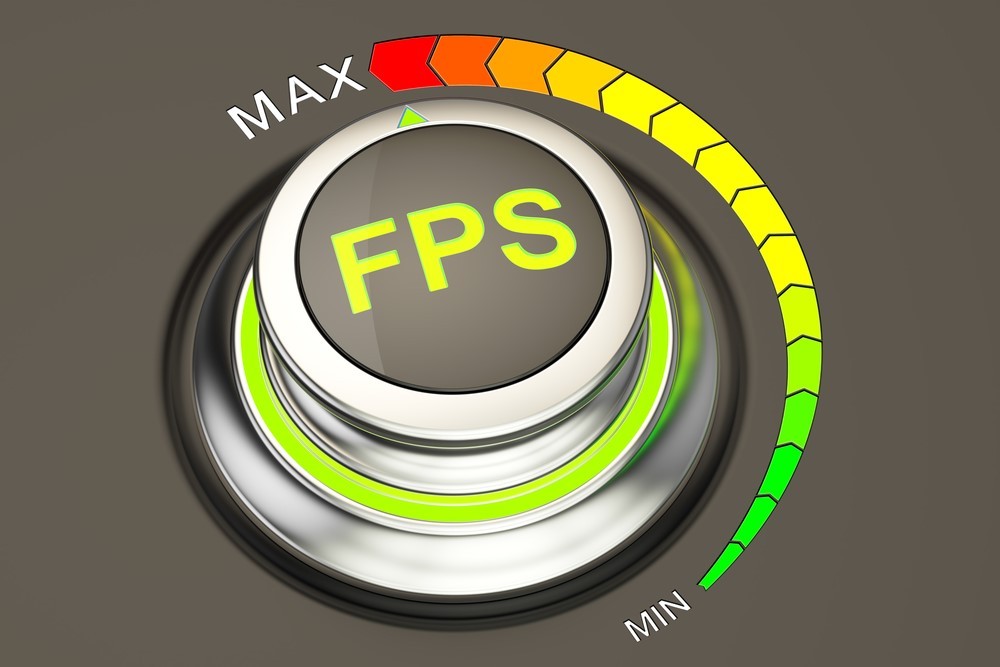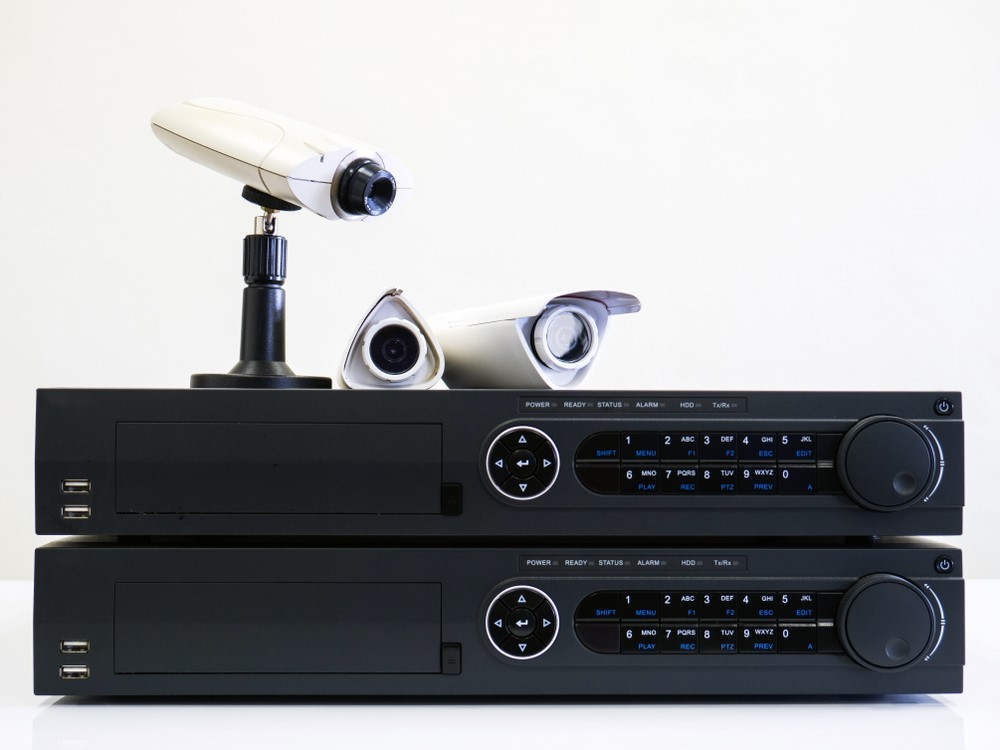When considering how much data security cameras use monthly, you must consider several factors. The amount of data used will depend on your camera resolution, frames-per-second capture rates, the number of cameras in your system, and if a network video recorder is being used to distribute your data.
Factors like the security camera only recording when motion is detected or on all the time must be considered when tallying overall usage.
Homeowners should be aware that many internet service providers limit or throttle their data plans regarding residential services. This makes knowing how much data is being consumed a critical thing to consider.
How Much Data Do Security Cameras Use Monthly?

As mentioned, five factors influence how much data is used every month. We will discuss these factors in greater detail below.
On average, the answer is 400 GB for Wi-Fi-enabled security systems and 60 GB for motion-detection cameras. Again, there may be some exceptions to this rule.
Camera Resolution
The resolution of your camera matters when you’re trying to catch criminal activity. Fortunately, smart Wi-Fi-enabled security cameras provide very clear HD video. But you will pay more in bandwidth for this higher quality.
The best cameras offer 1080p resolution. When compared to lesser quality cameras, the difference in using these cameras is that they will capture images in challenging situations. For example, footage or images captured outdoors in low-light conditions will need a higher resolution for a clear image. This requires more data to produce.
The best scenario is purchasing smart cameras. They intuitively know when something is about to occur. They will switch to HD resolution when they detect activity. When nothing is happening, they revert to SD, thereby saving data.
Number of Cameras

The number of cameras on the network will affect the pull of bandwidth. However, the benefits of multiple cameras always outweigh the usage concerns. A network of cameras will cover a large property without needing to be wired, which can be costly. These systems can go anywhere on the property. Furthermore, if you have a solar camera, this will eliminate the need for electricity.
Best Solar Powered Security Camera – Perfect For All Weather
Wireless security cameras send data directly to cloud storage. It eliminates the concern that a criminal may steal the DVR, but it doesn’t eliminate the problem of data breaches. You should note that uploading to cloud storage will also use bandwidth.
Frames Per Second

Frames per second indicate how frequently an image is captured. If the camera does 30 FPS, it will record 30 frames in one second when transmitting video. Higher frames per second will provide clearer, smoother video footage. If the camera contains low FPS, images will be fuzzy, difficult to make out, and choppy.
Again, this image clarity comes at a cost of increased bandwidth usage. However, when and if you need it, you will have clear evidence to provide to authorities.
Using an NVR

Network video recorders obtain data from security cameras. Then they store it on secure servers instead of sending it into cloud storage. This reduces data usage. However, NVRs are not like DVRs or computer-based recordings.
Network video recorders are easy to use and designed to house security footage. Customized software is embedded into the technology for recording and storage. This provides an excellent option if you are concerned about data usage.
Cameras That Are Always Recording Versus Motion Detected
While offers 24/7 protection, you may want to revert to a motion sensor camera if you are concerned about the amount of data being used. When considering cameras for the home, some areas are more secure than other locations. More secure locations may do well if you incorporate motion-detected cameras.
For high-traffic areas, you may want to use continually-on cameras. This option will provide the best of both worlds and allow you to reduce data usage.
Avoiding High Data Costs
If you are concerned about data usage, you can isolate video surveillance to a designated, separate network. You can incorporate two different routers, one handling Wi-Fi security and the other handling regular activity. You can also have separate internet accounts.
However, most people haven’t taken this step, as a good-quality camera can handle network use properly.
Which System Is Best for Data Use: Wired or Wireless?
More homeowners are turning to wireless/Wi-Fi video surveillance. There are several advantages to a wireless security camera system. These include:
- Wi-Fi systems are more cost-effective when installing them. You do not have to pay someone to do the wiring for you as they are less invasive than a wired camera.
- Wireless systems store your footage in cloud storage.
- You can access footage through a digital device like a smartphone, computer, or laptop.
- Solar cameras can go anywhere on your property.
These reasons are why more people are turning to a wireless camera system. The costs are lower, and they are more convenient.
Solving the Issue of Large Data Use
To understand how much data your system will use, consult an expert. Find out how much data the system will use each month before installing it. Discuss what your best options are and what the cost will be. A rough estimation will help you properly prepare for incoming expenses each month.
Additionally, experts can work with you to find a system that will suit your budget and design the best video security network for your situation.
Despite finding out how much data security cameras use monthly, you may find that it is too costly to invest in a system that has every feature you want. In this case, figure out what features you need the most. This can help decrease the overall cost.
Consider wireless cameras to reduce costs and invest in ones that have motion detection to help your budget immensely each month and eliminate buyer’s remorse.
Data Usage Estimates by Resolution (Per Hour of Recording)
Resolution |
Approx. Data per Hour |
Approx. Monthly (24/7 Recording) |
|---|---|---|
480p |
250MB |
~180GB |
720p |
500MB |
~360GB |
1080p |
1.5GB |
~1.1TB |
2K |
3GB |
~2.2TB |
4K |
7GB |
~5TB |
Note: These estimates assume continuous recording and no compression. Actual usage will vary with compression and activity levels.
Example: Motion-Activated Camera
A camera that records only when motion is detected (say, 2 hours per day at 1080p) might only use:
-
1.5GB/hour × 2 hours = 3GB/day
-
3GB/day × 30 days = ~90GB/month
This is far less than continuous recording and more efficient for typical home setups.
How Many Cameras Can Your Internet Handle?
Here’s a rough idea of total data use for multiple cameras:
Cameras |
1080p Continuous |
1080p Motion-Activated (2 hrs/day) |
|---|---|---|
1 |
~1.1TB/month |
~90GB/month |
4 |
~4.4TB/month |
~360GB/month |
8 |
~8.8TB/month |
~720GB/month |
If you have data caps on your internet plan, continuous cloud recording with multiple cameras can quickly exceed limits.
Tips to Reduce Security Camera Data Usage
-
Lower resolution if ultra HD isn’t necessary.
-
Enable motion detection instead of recording 24/7.
-
Use local storage (microSD, NVR) instead of cloud upload.
-
Set smart recording schedules during active hours.
-
Choose cameras with H.265 compression for better efficiency.
Frequently Asked Questions
How much data does a 1080p security camera use per month?
Answer:
A 1080p security camera recording continuously (24/7) can use up to 1.1TB of data per month. If it’s set to motion-activated recording for about 2 hours per day, it may use closer to 90–100GB per month, depending on activity levels and compression settings.
Do security cameras use data when not recording?
Answer:
Yes, if your camera is connected to the internet, it may still use some data for live streaming, syncing, software updates, or sending alerts—even when it’s not actively recording. However, this usage is minimal compared to recording.
Will security cameras slow down my internet?
Answer:
They can, especially if you’re using multiple high-resolution cameras streaming to the cloud. This can impact your upload bandwidth. Using local storage, lowering resolution, or limiting live streaming can help reduce the load.
Do all security cameras use internet data?
Answer:
No. Local storage systems (like DVR/NVR setups or SD cards) don’t use internet data unless you’re remotely accessing footage. Cloud-based cameras, on the other hand, use data to upload recordings and stream live video.
Can I reduce how much data my security camera uses?
Answer:
Yes. You can lower your camera’s resolution or frame rate, enable motion-activated recording, limit cloud uploads, or use local storage to significantly reduce data consumption.
Final Thoughts
The monthly data usage of security cameras can range from just a few gigabytes to several terabytes depending on resolution, recording mode, and number of cameras. For most homeowners, using motion-activated recording and local storage offers the best balance of performance and efficiency.
Understanding your camera’s settings and optimizing for your internet plan will help you maximize your security while minimizing unnecessary data usage.
Most Popular Posts:
- How to Install Security Cameras in Your Home
- Do You Need Wi-Fi for Security Cameras?
- Which Type of Camera Is Best for Home Security?
- Do Home Security Cameras Record All the Time?
- Can I Install Security Cameras Myself?
